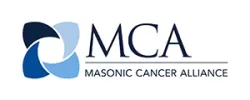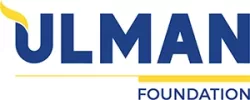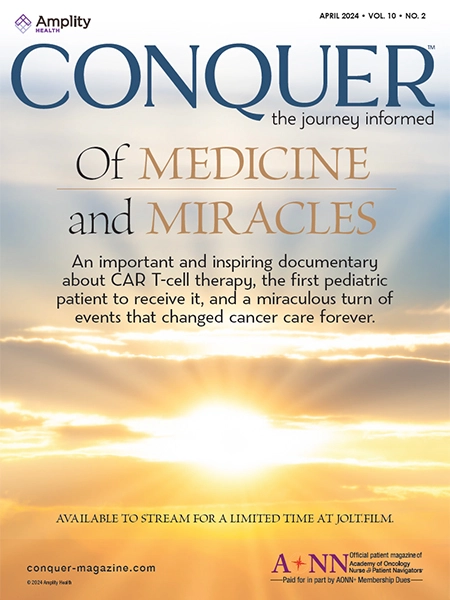AONN+ Program Director Lillie Shockney RN, BS, MAS, weighs in on this important initiative.
During his recent State of the Union Address, President Barack Obama made it clear he wanted to do something about cancer. "Let's make America the country that cures cancer once and for all," he declared in his speech.
President Obama appointed Vice President Joe Biden to lead the initiative. Biden has had a very personal experience with cancer. His son, Beau Biden, passed away after his battle with brain cancer last year. Vice President Biden has pledged funding and to break down medical research silos so that information can flow to various institutions, community oncologists, and patients.
The current president is not the first U.S. leader to put cancer research on the national agenda. President Richard Nixon did this in 1971 when he signed into law the National Cancer Act. This act led to to the mobilization and development of multiple cancer centers across the country, which eventually led to better patient outcomes. However, the cancer mortality rate continues to be very high in the United States. The National Cancer Institute estimated there was going to be over 589,000 deaths from it last year.
Still, specified funding for cancer during a time when research is much more advanced now offers the prospect of helping to advance treatment findings and clinical trials.
 AONN+ Program Director Lillie D. Shockney, RN, BS, MAS, ONN-CG, (pictured here) was asked questions about the topic recently. Shockney offered her insights into the government’s initiative, and how the funding might help patients and navigators with better outcomes.
AONN+ Program Director Lillie D. Shockney, RN, BS, MAS, ONN-CG, (pictured here) was asked questions about the topic recently. Shockney offered her insights into the government’s initiative, and how the funding might help patients and navigators with better outcomes.
With his recent State of the Union address, President Obama called upon the nation to cure cancer. What are your overall thoughts on this initiative?
Shockney: Cancer is a mortality leader, especially in the United States where it is the second leading cause of death amongst Americans according to the Centers for Disease Control and Prevention. And this is despite the fact we are seeing higher survival rates for cancer patients.
President Obama is not the first president to include this in such a speech, and several presidents have said the same.
Still it is virtually impossible to escape being impacted by it personally as a newly diagnosed person or caring for a loved with the disease. And the statistics certainly show this: one in two men and one in three women will be diagnosed with a life threatening cancer.
Do you see this call to action and additional funding as two things that will help get research to a critical stage?
Shockney: Additional funding will go a long way; especially now that scientists are learning more about the biology of cancer. Cancer is not one disease. It travels from its original organ site and spreads elsewhere, and it can develop different prognostic factors making it harder to treat. It’s a chameleon of sorts.
Do you think this will help navigators or patient care overall?
Shockney: I think giving attention to the seriousness of cancer in general and that it is now impacting half of men and a third of women will make people realize that the time has come to harness this monster. By giving more attention to this disease as a whole, I believe oncology navigators will now be more recognized for their value and better understood for their purpose.
While newer treatments are more effective, they are likely more expensive for patients, and we will need to decipher a way to contain treatment expenses.
Is there enough being done in the patient care and education side nationally, or would you like to see some of the government monies go towards those aspects as well?
Shockney: I hope that some government endeavors can be developed to support community outreach. First, we need for the public to understand they are not immune to getting cancer; then what are ways to reduce their risk; and what screenings should they embrace to help any potential cancers be found early.
Aside from potential government sponsored funding, is there anything else you think the federal government could do to assist navigators who are caring for patients with cancer? 
Shockney: I think there should be financial incentives provided to cancer centers who have developed effective navigation programs. One of the most important things is making sure patients receive their treatment in keeping with evidence based treatment guidelines such as the National Comprehensive Cancer Network (NCCN). If patients fall through the cracks and do not receive all of their phases of treatment--and within that phase, all of the treatment doses--then they risk not getting the clinical outcome that was hoped for.
Also there should be incentives for the consumers themselves to be following screening guidelines and healthy lifestyle behaviors that can help reduce risks. The bigger question is whether there would be disincentives for those not doing the right thing for themselves. All consumers need to have a baseline history obtained to know what they are currently doing or not doing, then develop a cancer prevention plan from there.
The government should also look at screening and treatment barriers, and offer funding or resources to address any barriers. For example, historically transportation has been the number one barrier for screening and treatment, but financial barriers are about to surpass transportation. Copays and deductibles are getting higher, and people don’t have cancer treatments factored into their budgets.
A screening mammogram, for example, carries no copayment, but if something is seen on a test and it warrants additional imaging studies, then a deductible and copayment will be needed. This can result in patients not returning for the additional tests, even after they are told there is something that warrants a closer look. So, withholding copayments and deductibles until a diagnosis is confirmed should be considered. And this could go a long way in getting people treated.
As a 40+ year oncology clinician myself, and a 24 year breast cancer survivor, the need to finally put an end to cancer cannot come too soon. For decades funding has been provided by many different organizations, including the government; however, it is distributed to specific scientific recipients rather than pooling monies together and working more collaboratively to find cures as well as develop successful methods for prevention, such as a vaccine that a child would be given to prevent them from ever being diagnosed. Different organizations choose to fund different aspects of treatment, prevention, technology, or other forms of cancer related care. It's time we climb out of our individual silos, and take a global research approach including sharing our findings. This way, we can all obtain the same goal: to get "cancer" listed in medical books in the chapter entitled, "Cured Diseases."













